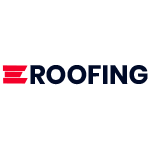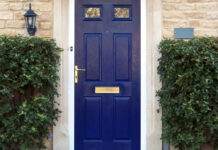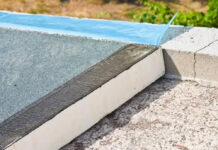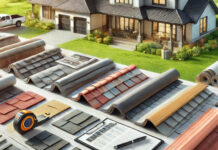Popular Conservatory Roof Types
When considering installing a new conservatory or replacing your existing conservatory roof, there are various different architectural designs to consider when deciding on which roof will be the most suitable for your needs.
Below we have outlined the main types of conservatory roofs:
Lean-To
Lean-To conservatories are simple, slanting roofs. They feature a low single-pitch roof that slopes away from the main building. Due to its simplicity, this is one of the most affordable and easiest conservatory roof types to install.
Double-Hip
A double-hip roof has two trapezium shaped roof faces and two triangle shaped surfaces that slope inwards towards a central ridge and away from the walls of the house. These conservatories offer more privacy due to their elevated walls and are well suited to properties with height restriction limits.
Edwardian
Edwardian conservatories have a similar design to the double-hip roof, however as opposed to having four sloping planes, they only have three. This gives the impression that the conservatory is part of the house rather than a separate construction.
Gable
A gable roof creates an illusion of height. The two sloped panels at the sides form a peaked roof and the triangular gable at the front acts as a centrepiece, drawing the eyes upwards, creating an exaggerated perception of height.
Victorian
Victorian-style conservatories typically combine a bay front with a steeply pitched roof. They are frequently characterised by arches, decorative glass and curved lines that all reach up to an apex on top of the conservatory roof. The bay window gives the impression of moving out into the garden, providing additional living space and adding a decorative touch to the home.
When deciding on a conservatory roof option, it is important to keep in mind the floor plan of the conservatory, most are square or rectangular. The Victorian conservatory is one of the only non-rectangular styles.
Choosing the Best Roof Material
When deciding the most suitable roof material for your conservatory, there are a range of options: glass, polycarbonate, tiles and hybrid.
There are two main factors to consider when deciding on which material will be the most beneficial for your conservatory: temperature regulation and natural light. It is important to choose a product that is going to be the most functional for your space, and will ensure that the conservatory is comfortable all year round.
Polycarbonate
Polycarbonate roofs are made up of thin layered roof sheets of either transparent or coloured plastic. It is both an inexpensive and lightweight option, meaning it is easy to transport and install.
- Insulation properties – the gaps between the layered sheets of plastic, traps warm air and promotes heat retention in the conservatory.
- Polycarbonate roofs tend to have a reduced transparency in comparison to glass, limiting the amount of natural light that can enter the conservatory.
- Polycarbonate roofs are not particularly noise-resistant, so during periods of heavy rainfall and strong winds, it will be rather loud inside your conservatory.
- They often contain UV inhibitors that will help to protect against the intensity of the sun, shielding furniture and flooring from fading. However, over time the roof itself may begin to yellow, affecting both the aesthetic appeal and the levels of natural light that enter the conservatory.
Glass
The most commonly used material for conservatory roofs, glass allows an abundance of natural light to enter the space and provides a strong, durable structure.
- Glass roofs are much more thermal and energy efficient, double or triple glazed glass will help reduce any heat escaping, increasing your energy efficiency and reducing the cost of your energy bills.
- Aesthetically, glass roofs are a very popular choice, they offer a sleek and modern finish, increasing the value of your home.
- Some variations of glass offer ‘self-cleaning’ options, so the glass reacts with the UV rays to break down the dirt, making maintenance much easier.
- Glass roofs are an expensive option, the glass itself is high in cost and is more difficult to install than polycarbonate.
Tiled
Out of all the options, tiled roofs are the most long wearing and durable. Having a solid, tiled roof to your conservatory can provide a more seamless and traditional look, blending in well with the rest of your house.
- Allows you to insulate the conservatory by providing a barrier between the interior and exterior, preventing any heat from escaping.
- Installing a solid, tiled roof means that you have the space to install foam insulation between the tiles and the roof structure, the same as the main roof of your home. This additional layer of insulation, helps to boost your energy efficiency and reduces the cost of your energy bill.
- Tiled roofs can be heavy and so to ensure the structural integrity of your conservatory, additional supports such as rafters and batons may need to be installed.
Hybrid
Hybrid roofs provide a combination of different roof materials, such as, glass, polycarbonate and tiles. While being an expensive option, hybrid roofs are fully customisable and so can be designed to fit your specific needs and the aesthetic you desire.
- Having both glass and solid, tiled elements, means that you can benefit from the increased natural light provided by the glass and the thermal insulation provided by the tiled panels. This will increase the functionality of the conservatory ensuring that it is usable and comfortable all year round.
- The price of a hybrid roof can be significantly greater than other options due to the cost of the different materials and the increased complexity of the installation.
What Makes a Roof Ideal for a Conservatory
The best roof for a conservatory is one which is durable, is a good insulator and so has beneficial energy efficiency ratings. It is also important that your conservatory roof has aesthetic appeal and pairs well with the style of your home, as your conservatory can help to increase the value of your home.
Finding the Perfect Roof for Your Conservatory
When deciding the right material and design for your conservatory, there are a number of factors you need to consider:
- The intended use of the space
One of the most important factors to consider, is the purpose of the space as this will determine the required light levels and temperature regulation that is needed in the conservatory.
- Levels of natural light you would like in the room
If you would like the space to be especially light and bright, you may want to consider opting for a glass roof or a hybrid option featuring glass panels.
- Lifespan of your chosen roof material
Taking into consideration your environmental surroundings and the direction your garden is facing is important to ensure you choose the correct roof materials. In south facing gardens, it may not be advisable to install a polycarbonate roof, as they are prone to yellowing overtime in direct sunlight, and do not have the best insulation properties in comparison to glass or tiled roofs, so the conservatory may become rather warm in the summer months.
- Thermal efficiency
Choosing a roof material that has sufficient insulation properties is essential. Not only will this improve the usability of your conservatory, making it a more comfortable space but by reducing heat loss, your conservatory can increase your energy efficiency and thus reduce your energy bill.
- Budget
When replacing an existing or installing a new conservatory roof, it is important to understand the costs involved, as it is a significant investment. Polycarbonate roofs are the most affordable options however, they do not have some of the advantages other materials have, and may not be as durable.





